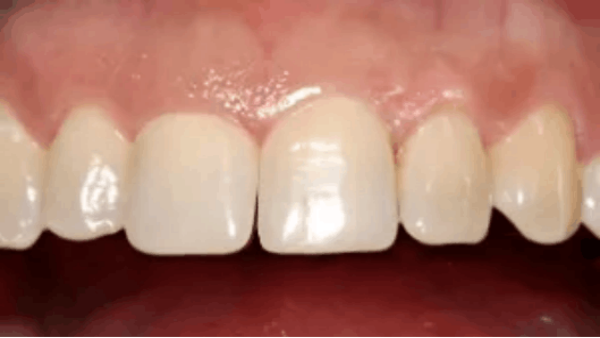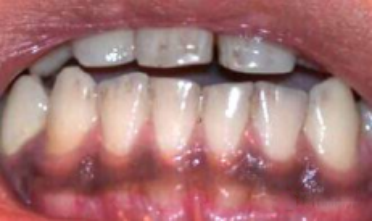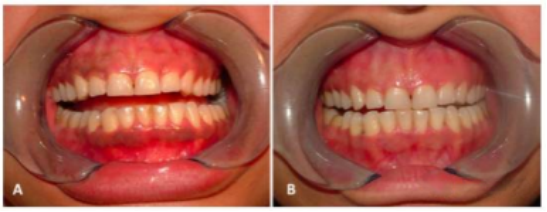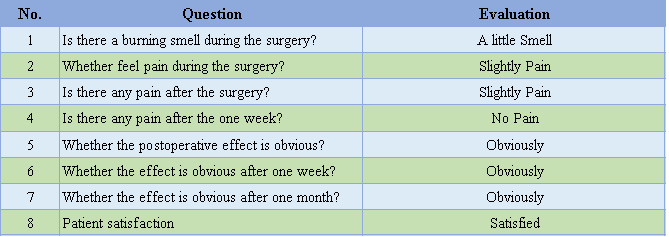
2023-06-06 3888
Abstract
In daily life, having white and neat teeth is everyone's pursuit of health. But at the same time, people often ignore the health and beauty of the gums. The gums of normal people are pink, and a small number of normal people have cloudy melanin deposits on the gum surface. Although the accumulation of melanin has no obvious harm to oral health, this aesthetic effect has a negative impact on people's normal social interaction.
Key Words: Diode laser, Melanin, Gingival whitening
1. Causes of pigmentation
Gingival melanin pigmentation, English is Gingival melanin pigmentation (GMP). There are many factors that lead to the appearance of melanin in the gums. This substance that causes the color change of the gums or oral mucosa has two sources. Part of it comes from the body itself, called endogenous substances, mainly including melanin and various pigments from hemoglobin. The other part comes from outside the body and is called exogenous substances, mainly including heavy metals, dyes, plant pigments and medicinal properties. For people who have smoked a lot for a long time, due to the stimulation of nicotine on the melanocytes in the basal layer of the gums, it is easier to form melanin in the epidermis of the gums, thereby changing the color of the gums.

Case of gingival hyperpigmentation
2. Traditional treatment
Traditionally, the removal of gingival hyperpigmentation mainly uses a scalpel to remove the gingival epidermis containing melanin.
Advantages: easy operation, low cost, not limited by equipment and venue.
Disadvantages: Bleeding during surgery, risk of infection, and possible scar tissue formation.
3. Laser treatment
Using 810nm or 980nm semiconductor laser which is extremely effective for melanin absorption
Advantages: Less pain, no bleeding, no scar tissue formation, less risk of infection.
Disadvantages: Need to invest in the cost of oral laser equipment.
3.1 Oral laser clinical protocol
Fiber core diameter |
300μm or 400μm |
Laser Power |
1.5W ~ 2.5W |
Output mode |
CW(Continuous mode) |
Fiber tip initialization |
No |
3.2 Operation
Place the end face of the fiber lightly on the gingival surface with pigmentation, and move the fiber handle in a certain direction while emitting the laser. It should be observed on the spot that the gingival epidermis is peeled off and peeled off layer by layer. Repeat this operation until the entire area has been treated.

Diode laser for gingival pigmentation treatment
3.3 Precautions for surgery
①Before laser surgery, it should be confirmed that the patient has pigmentation rather than other pathological discoloration. If the hyperpigmented area becomes rough, raised, bleeds easily, or develops lumps, other treatment options should be considered.
②When starting the treatment, the laser power should be started from a low power to avoid carbonization of the gingival tissue.
③Laser operation does not require surface and local anesthesia. If the patient feels uncomfortable, 10% lignocaine can be sprayed or smeared.
④ During the operation, if there is residual tissue fiber attached to the end face of the optical fiber, it should be cleaned up in time. Otherwise the laser energy is absorbed by the residual tissue resulting in a soft tissue cutting effect
⑤ There may be a burning smell during operation, which can be removed by suction equipment.
⑥ Avoid eating hot food within 2 days after the operation.
3.4 Clinical effect

Comparison of the effect before and after 18 months
of laser dental surgery (Female, 22 years old)
3.5 Patient evaluation

3.6 About the phenomenon of repigmentation
In general, for most people, there is no need for further treatment after laser whitening. However, due to the melanin of the gums has a lot to do with personal living habits and physical fitness. Therefore, there are cases where some patients reappear darker gums 2-3 years after surgery. If it happens, it can be dealt with by repeated laser treatment.